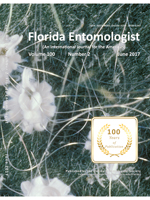Ambrosia beetles frequently invade non-native regions but are typically of no concern because most species live in dead trees and culture nonpathogenic symbiotic fungal gardens. Recently, however, several ambrosia beetle—fungus complexes have invaded non-native regions and killed large numbers of host trees. Such tree-killing invasions have occurred unexpectedly, and the mechanism of the ecological switch from dead trees to live trees has been left unexplained, or termed an “evolutionary mismatch.” We demonstrate that the mismatch hypothesis is not supported in the redbay ambrosia beetle, Xyleborus glabratus Eichhoff (Coleoptera: Curculionidae), because this beetle is able to colonize live trees also in its native range and its symbiotic fungus acts as a pathogen in some native hosts. We further synthesized findings from recent literature and unpublished observations on several other invasive fungus-associated beetles such as Euwallacea fornicatus (Eggers) (Coleoptera: Curculionidae), Platypus quercivorus Murayama (Coleoptera: Curculionidae), and Pityophthorus juglandis Blackman (Coleoptera: Curculionidae) to present an alternative to the “evolutionary mismatch” hypothesis. The revised hypothesis is that the majority of destructive ambrosia beetle species that have invaded new regions are already capable of colonizing living tree tissues in their native habitats. Furthermore, associated fungi are typically mildly to strongly pathogenic to native host tree species. A predisposition to colonize living tree tissues occurs in very few ambrosia beetle species, but these species predictably act as pests in invaded regions. Thus, simple screening of ambrosia beetle—fungus pairs for this particular ecological trait—colonization of live tree tissues—in their native habitats could help discriminate future tree-killing invasive pests from the majority of species that likely remain harmless.
How to translate text using browser tools
1 June 2017
Studies of Ambrosia Beetles (Coleoptera: Curculionidae) in Their Native Ranges Help Predict Invasion Impact
Jiri Hulcr,
Adam Black,
Kirsten Prior,
Chi-Yu Chen,
Hou-Feng Li

Florida Entomologist
Vol. 100 • No. 2
June 2017
Vol. 100 • No. 2
June 2017
cultivo de hongos
fungus farming
invasive
invasor
pathogen
patógeno
Scolytinae




